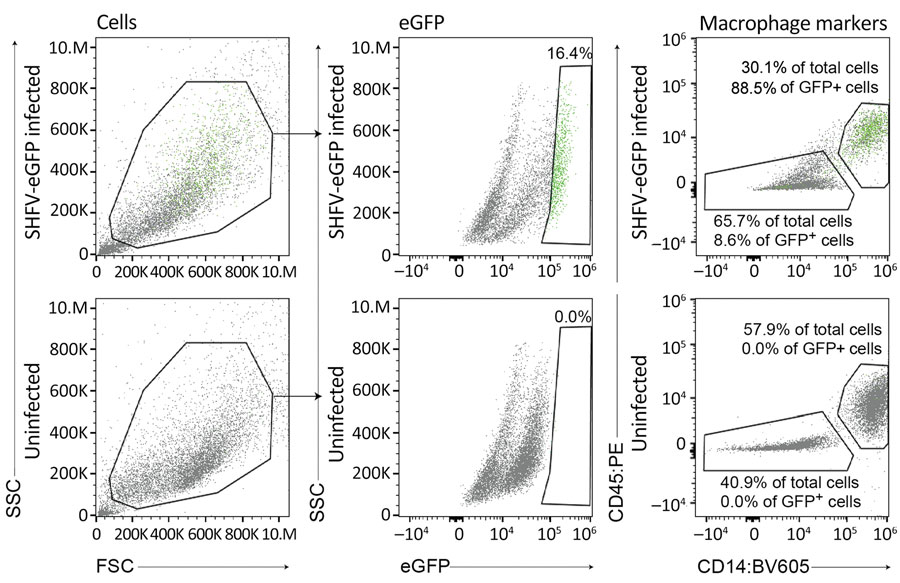Volume 30, Number 4—April 2024
Research
Isolation of Diverse Simian Arteriviruses Causing Hemorrhagic Disease
Figure 3

Figure 3. Flow cytometry of SHFV-eGFP–infected (top plots) and uninfected (bottom plots) splenocytes in study of isolation of diverse simarteriviruses causing hemorrhagic disease. Green dots indicate cells infected with SHFV-eGFP. BV605, brilliant violet 605 dye; eGFP, enhanced GFP; FSC, forward scatter; GFP, green fluorescent protein; PE, phycoerythrin; SHFV, simian hemorrhagic fever virus; SSC, side scatter.
Page created: February 15, 2024
Page updated: March 20, 2024
Page reviewed: March 20, 2024
The conclusions, findings, and opinions expressed by authors contributing to this journal do not necessarily reflect the official position of the U.S. Department of Health and Human Services, the Public Health Service, the Centers for Disease Control and Prevention, or the authors' affiliated institutions. Use of trade names is for identification only and does not imply endorsement by any of the groups named above.